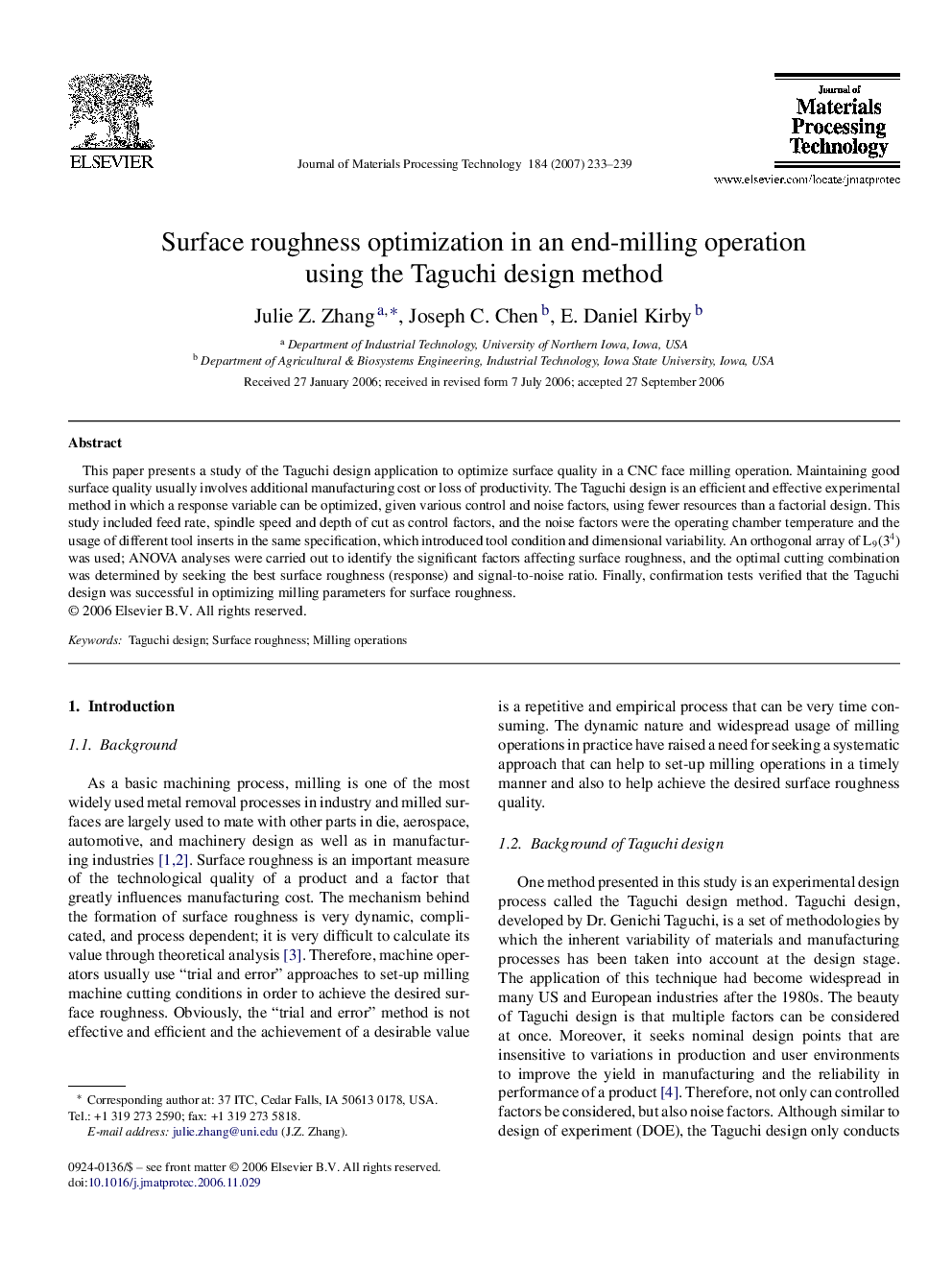| کد مقاله | کد نشریه | سال انتشار | مقاله انگلیسی | نسخه تمام متن |
|---|---|---|---|---|
| 798845 | 1466780 | 2007 | 7 صفحه PDF | دانلود رایگان |

This paper presents a study of the Taguchi design application to optimize surface quality in a CNC face milling operation. Maintaining good surface quality usually involves additional manufacturing cost or loss of productivity. The Taguchi design is an efficient and effective experimental method in which a response variable can be optimized, given various control and noise factors, using fewer resources than a factorial design. This study included feed rate, spindle speed and depth of cut as control factors, and the noise factors were the operating chamber temperature and the usage of different tool inserts in the same specification, which introduced tool condition and dimensional variability. An orthogonal array of L9(34) was used; ANOVA analyses were carried out to identify the significant factors affecting surface roughness, and the optimal cutting combination was determined by seeking the best surface roughness (response) and signal-to-noise ratio. Finally, confirmation tests verified that the Taguchi design was successful in optimizing milling parameters for surface roughness.
Journal: Journal of Materials Processing Technology - Volume 184, Issues 1–3, 12 April 2007, Pages 233–239